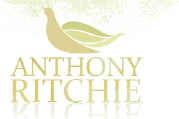

Piano Trio
by Anthony Ritchie, for violin, cello and piano , Opus 100
Piano Trio
This work was a finalist in the SOUNZ Contemporary Award for 2001, and signals a new direction in the composer's style, using 12-tone rows for the first time since student works.The Piano Trio is in three movements.
- YEAR: 2001
- DURATION: 16 minutes
- LEVEL: 4 | Challenging for professional musicians
Listen to a sample
The score for this work can be purchased from Wai-te-ata Music Press
Programme Note
- I - Maggie Boy, Nice Boy
- II - The Deamon
- III - Hyper-dyper
I got to know Euan Murdoch both as a friend and as a musician when he came to Dunedin to teach cello at the University some years ago. Everything about Euan encouraged me to write him a piece: his lively and warm personality, his huge enthusiasm for music and his brilliance as a player, plus a certain down-to-earth Kiwi quality that is refreshing to encounter within classical music circles. Having composed 'The Blue Sonata' for him in 1999, I was approached by Euan to write something else. He had moved to Wellington for a job at Victoria University, and wanted a piece for Trio Victoria. I relished this opportunity to compose again for Euan, and for the others in the group, Doug Beilman and Thomas Hecht.
During 2000 I came to the conclusion I needed a substantial break from composing, due to what might be termed creative 'burn out'. I also wanted the time to reassess the direction I was heading with my music. Consequently, the trio commission arrived at a time where I felt the urge to experiment and come up with something a little different. Having said that, there are connecting threads with earlier pieces, particularly my Symphony No.2 which was premiered at the Wellington Arts Festival in 2000.
Piano Trio was commissioned by Chamber Music New Zealand, with funding provided by Creative New Zealand.
This Piano Trio attempts to suggest psychological states through sound images. It is not directly programmatic but, as the titles of the movements suggest, there are distinct ideas and moods imbedded in the music. The first movement uses imaginary characters from childhood - 'Maggie Boy' and 'Nice Boy' - as representations of two sides of personality: the bad and the good, or the dark and the light. 'Maggie Boy' has music that is barbarous, angular and dissonant. In the opening section a 12-note theme appears, providing the basis for much of the material that follows. Following a metric modulation (or change in note values) the violin and cello play a wispy, lyrical theme that portrays 'Nice Boy', while the pianist's right hand tinkers away with 12-note themes, impervious to the sentiments of the strings. 'Maggie Boy' returns in the final section of the movement, dispatching 'Nice Boy' to the recesses of the mind.
The second movement, 'The Deamon', is concerned with neither good nor bad but rather the nothingness of depression, that caged state of mind where emotions and feelings seem to spiral inwards. Melodic lines twist and turn, trying to find a way out of the psychological cage. Reference is made to the 12-note theme from the first movement, as well as the 'life and death' theme from my Symphony No.2.
The third movement, 'Hyper-dyper' is, as its title suggests, ebullient and almost frantically busy. An angular and jazzy opening theme is followed by a nervous, darting second theme featuring some special effects on the strings. The piano rudely interrupts proceedings and a playful but tense middle section follows, based on the 12-note theme from the first movement. In the Coda the 'hyper' quality dominates and the Trio comes to an end on a crunching discord.